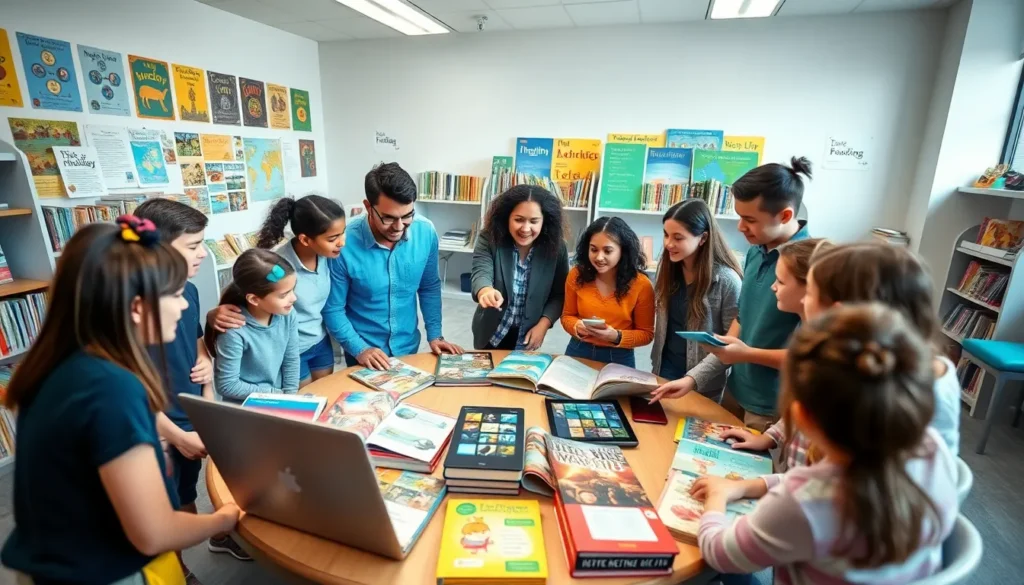Imagine a classroom where every student not only knows how to read but is excited about diving into new worlds through books. Enter “Reading and Literacy Added Authorization”, the secret sauce that’s transforming educational landscapes. If you think that reading is just about decoding words on a page, you’re in for a surprise. This authorization goes beyond traditional methods to embrace innovative practices that engage every learner. Buckle up as we explore how this concept is reshaping literacy and making education both effective and fun.
Table of Contents
ToggleOverview Of Reading And Literacy Added Authorization

Reading and Literacy Added Authorization is gaining traction as an essential credential for educators. It blends traditional literacy skills with contemporary pedagogical approaches. This initiative aims to empower teachers with specialized training that enhances their capability to foster reading and literacy among students. It emphasizes not just the ability to read but also comprehension, critical thinking, and a love for literature. Hence, this authorization can be seen as a paradigm shift in literacy instruction, providing educators with tools to meet diverse learning needs effectively.
Importance Of Literacy In Education
Literacy forms the backbone of education and personal development. In today’s age, being literate is far more than simply being able to read and write. It’s about unlocking access to knowledge, fostering critical thinking, and enabling effective communication. Literacy influences academic success and personal growth, ensuring individuals can navigate an increasingly complex world. Also, enhancing literacy skills significantly impacts students’ confidence and motivation. With proficient literacy, students can engage deeply not only in academic subjects but also in everyday conversations and community activities.
Key Components Of Reading And Literacy Authorization
Reading and literacy authorization encompasses various key components that enhance teaching and learning processes.
Impact On Teaching Practices
This authorization equips educators with strategies to integrate reading across all subjects. Instead of confining literacy to language arts classes, it encourages teachers to embed reading activities into science, social studies, and even math. When teachers employ diverse instructional strategies, they cater to various learning styles, making literacy accessible to all students.
Support For Diverse Learners
Besides, the authorization focuses on inclusivity. It aims to provide educators with skills to support English language learners and students with special needs. Recognizing that every student is unique, it promotes differentiated instruction to nurture each learner’s individual strengths and challenges. The result is a more equitable educational environment where every student has the opportunity to thrive.
Integration Of Technology In Literacy Education
The integration of technology is revolutionizing literacy education. Digital tools, eBooks, and interactive platforms are not only engaging students but also allowing them to personalize their learning experiences. Imagine a classroom where students can access a vast library of resources at their fingertips. Technology fosters collaborative learning, enabling students to work together on projects that enhance critical thinking skills. Also, educational apps designed to improve literacy skills make learning fun and interactive, drawing in even the most reluctant readers.
Challenges In Implementing Authorization
Even though its numerous benefits, implementing Reading and Literacy Added Authorization is not without its challenges. Many educators may feel overwhelmed by the shift in teaching practices, leading to resistance or confusion. Initial training can be intense, requiring time and resources that many schools lack. Also, there may be a disconnect between the new practices and existing curricula, making integration challenging. It’s essential for schools to communicate effectively, provide ongoing support, and foster a culture of collaboration to overcome these hurdles.
Future Directions For Reading And Literacy Authorization
Looking ahead, the future of Reading and Literacy Added Authorization appears promising. As educational technology continues to advance, there will likely be more personalized learning pathways and resources available for educators. Collaboration among teachers will become even more vital. If they share best practices and lessons learned, the collective knowledge will help refine teaching methodologies. Also, advocacy for policies that support literacy initiatives will be crucial. By prioritizing literacy at all levels of education, society can ensure that future generations are not just literate but also empowered to contribute meaningfully to the world.








